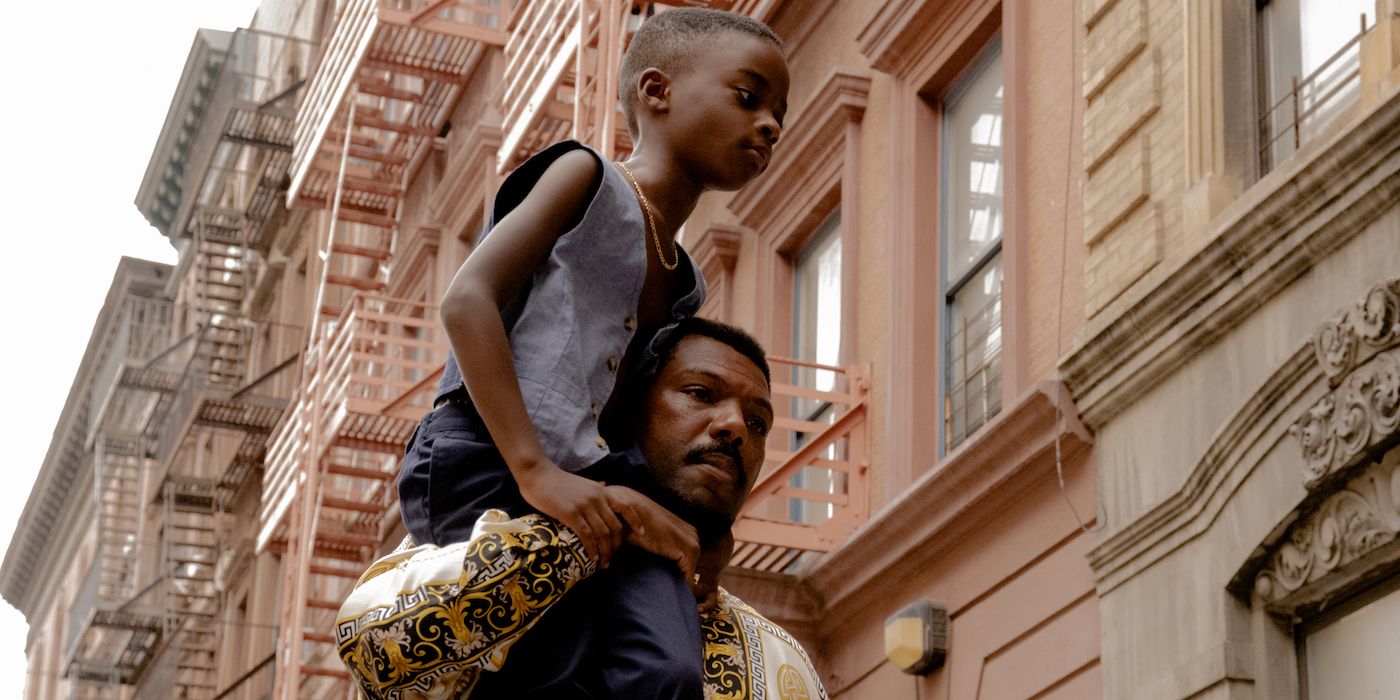Summary
Writer-director A.V. Rockwell’s feature debut A Thousand and One has gotten praise for its gripping drama of a devoted mother who kidnaps her son from the NYC foster care system, prompting audiences to wonder if it’s based on a true story. A Thousand and One stars Teyana Taylor as Inez de la Paz, a hairdresser and newly-released prison inmate living in New York City. She visits her 6-year-old son, Terry (Aaron Kingsley Adetola) at his foster home. When he tells her that one of his earliest memories is her abandoning him when he was two years old, a desperate Inez kidnaps Terry back and goes on the run.
What follows is a story of a mother’s love and fierce devotion to her son, as Inez and Terry struggle to survive in 1990s New York City. As Terry grows up, he and Inez must keep up the facade, aided by forged documents, in order for her to give him the school and the family he deserves. Eventually, she reunites with and marries Lucky (William Catlett), an old boyfriend, and he promises to take care of Terry as they try to survive. It’s a remarkably touching story, which is why A Thousand and One’s reviews were so good, so realistically and poignantly rendered that it stands to reason that it might be based on real people and a true story.
A Thousand And One Is Not Based On A True Story
No matter how plausible it seems, however, A Thousand and One is not actually based on an exact true story. It is, however, very much rooted in reality. As A Thousand and One’s story unfolds over the years, Inez and Terry struggle to keep their heads above water and hold onto what they have as gentrification starts to transform their neighborhood. In the late ’90s movie setting when this change begins, their Harlem slowly becomes a harder place in which to survive as gentrification starts to push out the marginalized and the longtime minorities who lived there.
In the ’90s, almost 95% of New York’s Harlem neighborhood was composed of Black people and families, according to the U.S. Census Bureau. Despite the neighborhood’s growing population overall, by 2006, the number of Black residents in Harlem had dropped to 69%. The rise in police brutality and people being displaced from affordable housing was a phenomenon that changed the neighborhood in the 1990s-2000s, and A Thousand and One doesn’t shy away from it. This demographic and economic change is highlighted right alongside the evolution of Inez and Terry themselves, with skyline shots evolving throughout the film and news reports in the background cluing the viewer into the rising tensions of the area.
A Thousand And One Is Partially Inspired By A.V. Rockwell’s Real Experiences
A.V. Rockwell has been open in interviews about the fact that while A Thousand and One wasn’t based on a definitive true story, it was her personal experience with seeing her New York neighborhood change that partly inspired the story of the movie. Rockwell actually grew up in Queens, not Harlem, but her experience was still the same as what Terry and Inez experienced in the movie. As a young Black woman coming of age in a changing New York City, Rockwell pulled from her own life and the lives of other young Black women and mothers she knew in order to write a narrative that is so grounded and compelling.
Rockwell also noted in an interview with IndieWire that the real gentrification of the city gave her inspiration for the film. “The way that gentrification was reshaping New York City and me, especially observing that, it didn’t feel super natural,” she explained. “It wasn’t like every aspect of the city was changing. It felt like certain neighborhoods were being targeted.” Though A Thousand and One is not based on a true story, Inez de la Paz could have been any young Black woman living in New York City at the time, which is what makes the simple story ultimately so powerful.























![It was all going well until… | Squid Game 2 | Netflix [ENG SUB] It was all going well until… | Squid Game 2 | Netflix [ENG SUB]](https://thehollywoodpremiere.com/wp-content/uploads/2025/01/It-was-all-going-well-until-Squid-Game-2-120x86.jpg)







